Meet the Robin
The friendly bird in our parks and gardens.
This week, our birdwatcher is nestled in a cemetery, tending to the grave of a loved one. The light is dappled by the gnarled old trees surrounding the Church. Regular flurries of song give away the presence of many different species of small garden bird. Out of the foliage, a curious little bird hops – far closer than the rest.
Perching on a low branch, it stops to sing a sweet, high song. He regards the birdwatcher, head cocked to one side. Who is this small bird, who seems to have no fear of humans?
The bright orange breast tells us everything we need to know… it’s a Robin!
ID features
The ‘Robin redbreast’ is one of the first birds many people learn to identify. Its orange throat and breast stands out against their pale tummy and plain brown back, wings and tail. They were named ‘redbreast’ before the colour orange had its own name.
Male and female Robins look alike, and they keep the same plumage throughout the year. Every Robin’s red patch is uniquely shaped, so you can learn to tell your regulars apart.
They stand tall on longer legs than sparrows or finches, moving with a jaunty hop or run. And they are often the boldest of the garden birds, befriending people and perching atop garden furniture as if to ask “Where’s the grub, then?”.
Juvenile Robins fledge at two weeks old. They have no red on their breast, just a speckled golden-brown where the red will be. They are quite fluffy compared with the sleek adults, and their yellow gape at the corner of their mouths gives them an adorable grumpy look.
Their song is truly beautiful, with a warbling, whistling quality. It’s quite complex and varies through the year. Listen to it here.
They start singing before other bird species each day, and finish later – sometimes singing through the night where there is artificial lighting. They are not shy and will usually pose in the open while singing.
Feeding behaviour
Robins can often be seen darting from a low-hanging branch to the floor to grab a morsel before disappearing back onto their branch.
Alongside worms, Robins enjoy spiders and other insects. In Autumn and Winter, they branch out, adding seeds to their diet. Suet blocks or pellets in bird feeders are a particular favourite, and bags of mealworms often feature Robins on the packaging for good reason.
A true British icon
Robins are often found near human activity that disturbs the ground – including allotments, graveyards and near livestock like pigs. They are much easier to befriend than other species of garden bird, partly due to this proximity.
There is a theory that this is also because English people would historically never harm Robins thanks to their link with Christianity (keep reading for more on this). Other European nations held no such association, and killed them with as reckless abandon as any other species.
While not quite as gruesome as the Great Tit, there is a darker side to this otherwise charming garden friend. Up to 10% of all adult Robin deaths in a year can be attributed to… other Robins. They are very territorial, and it’s not unusual to see two male Robins engaged in a brutal skirmish.
Something special
The Robin is said to have gained its red breast in a variety of ways. Here are a few of the theories as to how they came by their distinctive splash of orange:
By plucking a thorn from Jesus’ head as he was on the cross, or singing to comfort him, and being splashed with his blood.
From fanning the fire that kept baby Jesus warm in the stable.
By getting scorched as it fetched water for souls in purgatory.
These remarkable little birds have certainly captured the imagination of British people for centuries. Scientists have spent a long time studying Robins, as they are able to sense the Earth’s magnetic field via their eyes. This is thanks to a neat system that involves quantum entanglement (and other highly technical-sounding mechanisms).
Where to spot a Robin
Like many of the birds in this series, Robins are found across the British Isles – everywhere except the very highest of highlands. They are common park and garden birds, but you can find them anywhere with enough insects to go around.
Easily confused with…
The distinctive red breast and plain brown wings, as well as its unique shape, mean the Robin is not easily mistaken for any of our common British birds. These are the two closest.
Stonechats have a similar golden hue to juvenile Robins, but they have streaky plumage where the Robin’s back and wings are a uniform brown. Stonechats also often have a pale or white collar, but this isn’t always clear. Check out the comparison images:

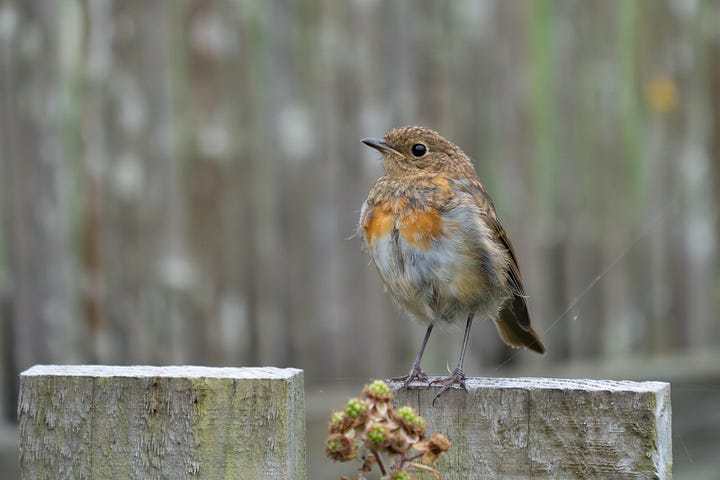
Male Bullfinches have a cherry-blossom pink breast, but are easy to tell apart due to their black head, grey back, black-and-white wings and enormously chunky beak compared with the Robin’s very thin one.
Bonus Robin facts
The Robin is regularly voted the UK’s favourite bird.
Postmen, wearing red, used to be referred to as ‘Robins’. It’s thought that the sight of these human ‘Robins’ delivering Christmas cards is why the bird is so closely associated with the festive season.
The words in the Latin name, Erithacus rubecula, are from the Ancient Greek for ‘unknown bird’ and the Latin word for ‘red’, respectively.
Robins were initially called Ruddocks, then Redbreasts, but in the 15th Century people enjoyed bestowing names upon birds and so ‘Robin Redbreast’ came about.
Robins are often said to bring messengers from loved ones in heaven (perhaps due to their hanging about in cemeteries). There’s a saying, “Loved ones are near when Robins appear”.
Old nicknames for Robins include Ruddock, Bobby, Robinet.
In Winter, male and female Robins have their own territories and sing a slightly less jovial song than their Spring/Summer tune.
There are collective nouns for a group of Robins despite how territorial they are: a blush, bobbin, babble or breast of Robins.
The American Robin is a thrush, and is not remotely related to our Eurasian Robin, which is an Old World flycatcher.

Have you seen a Robin this week? Did you know the rumours about how they got their red breasts?
All photography is my own unless otherwise credited.


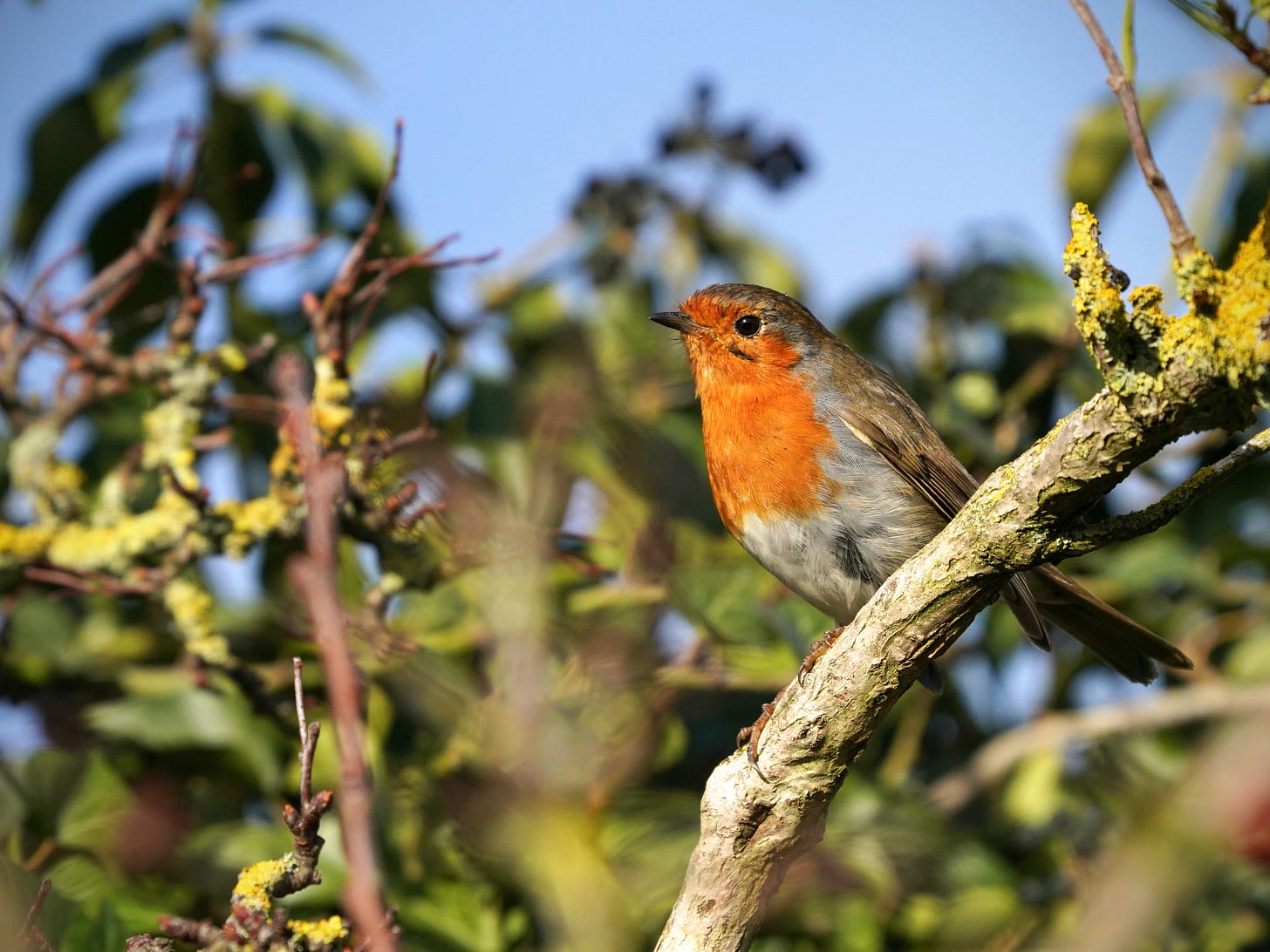
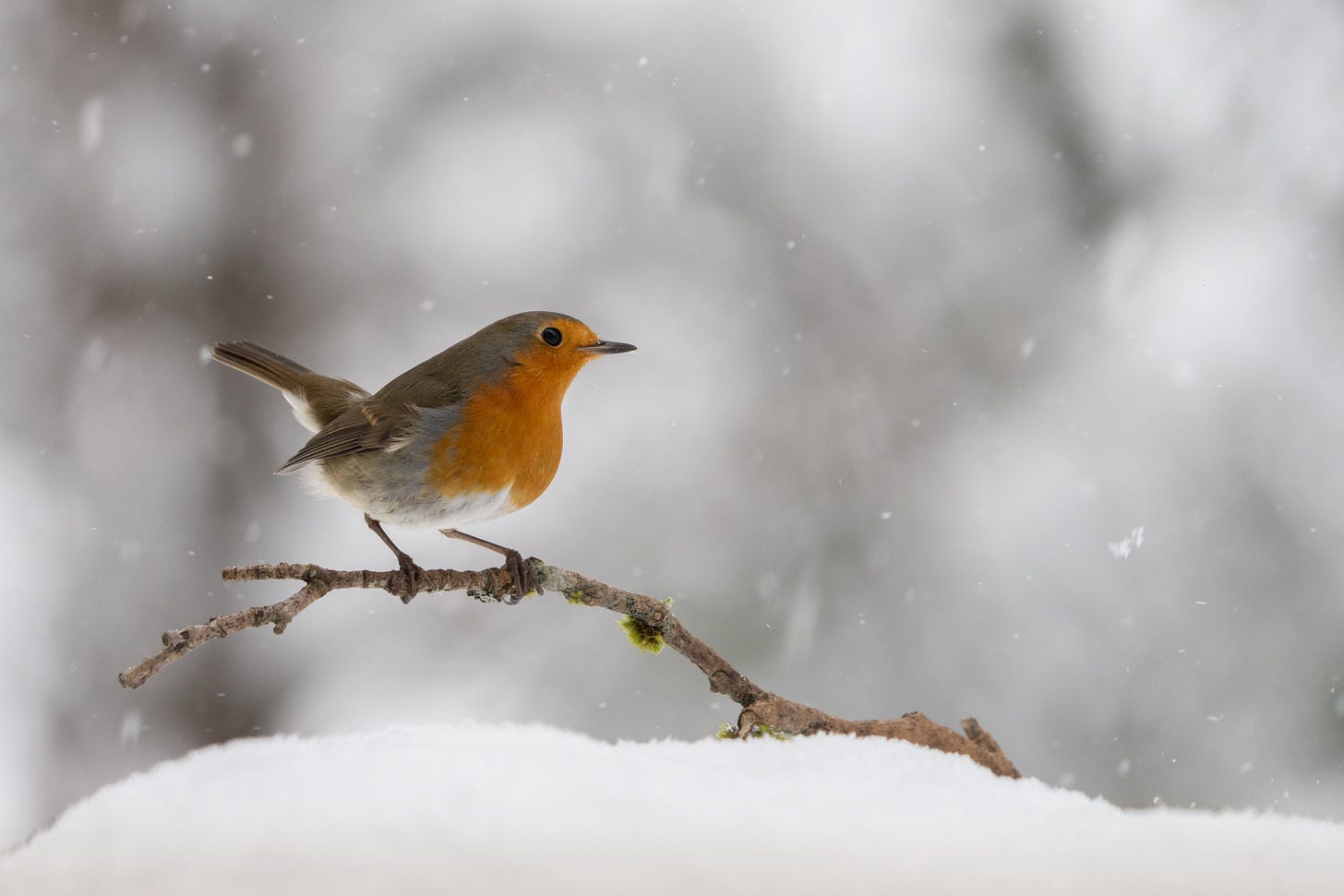

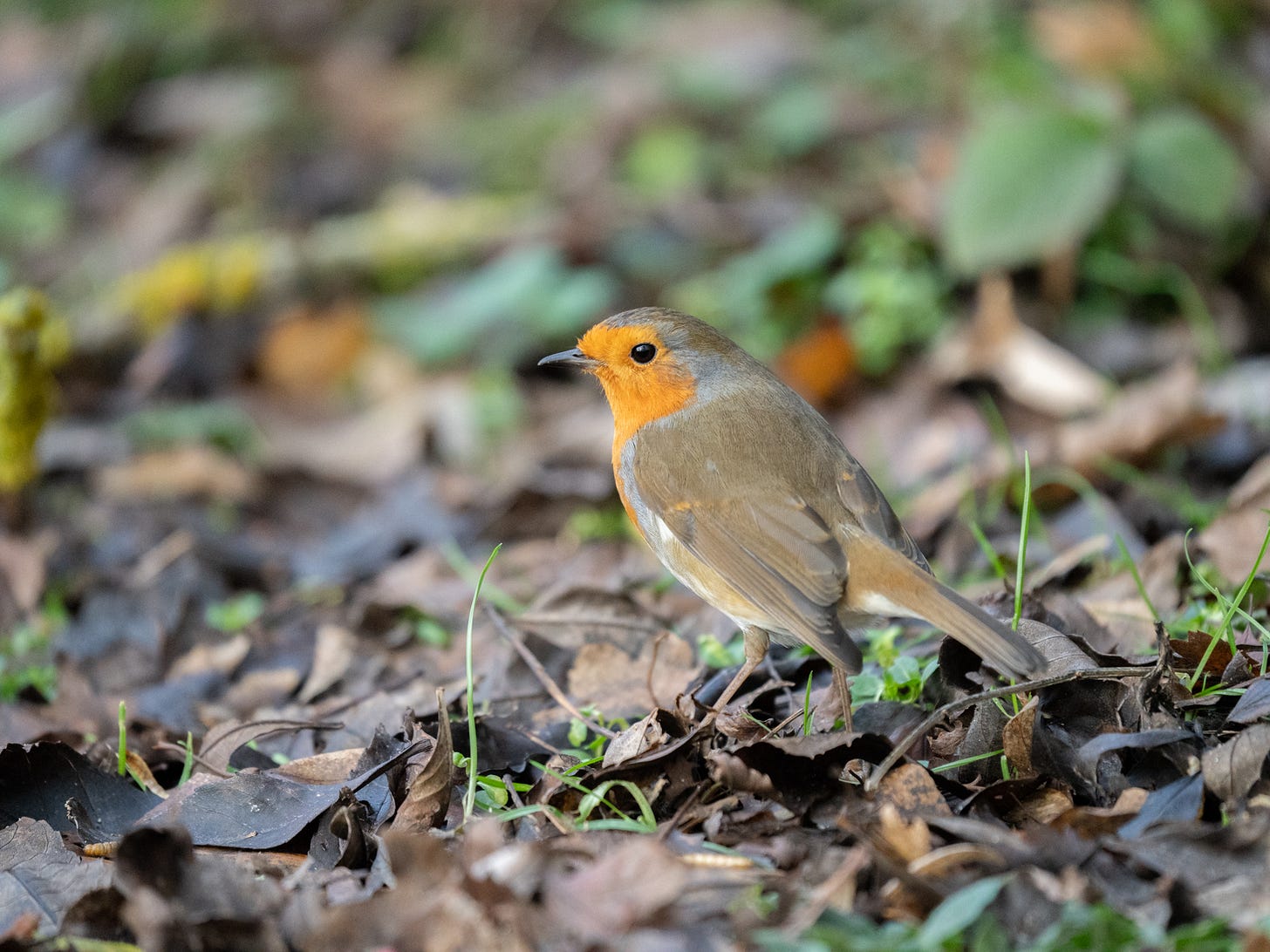
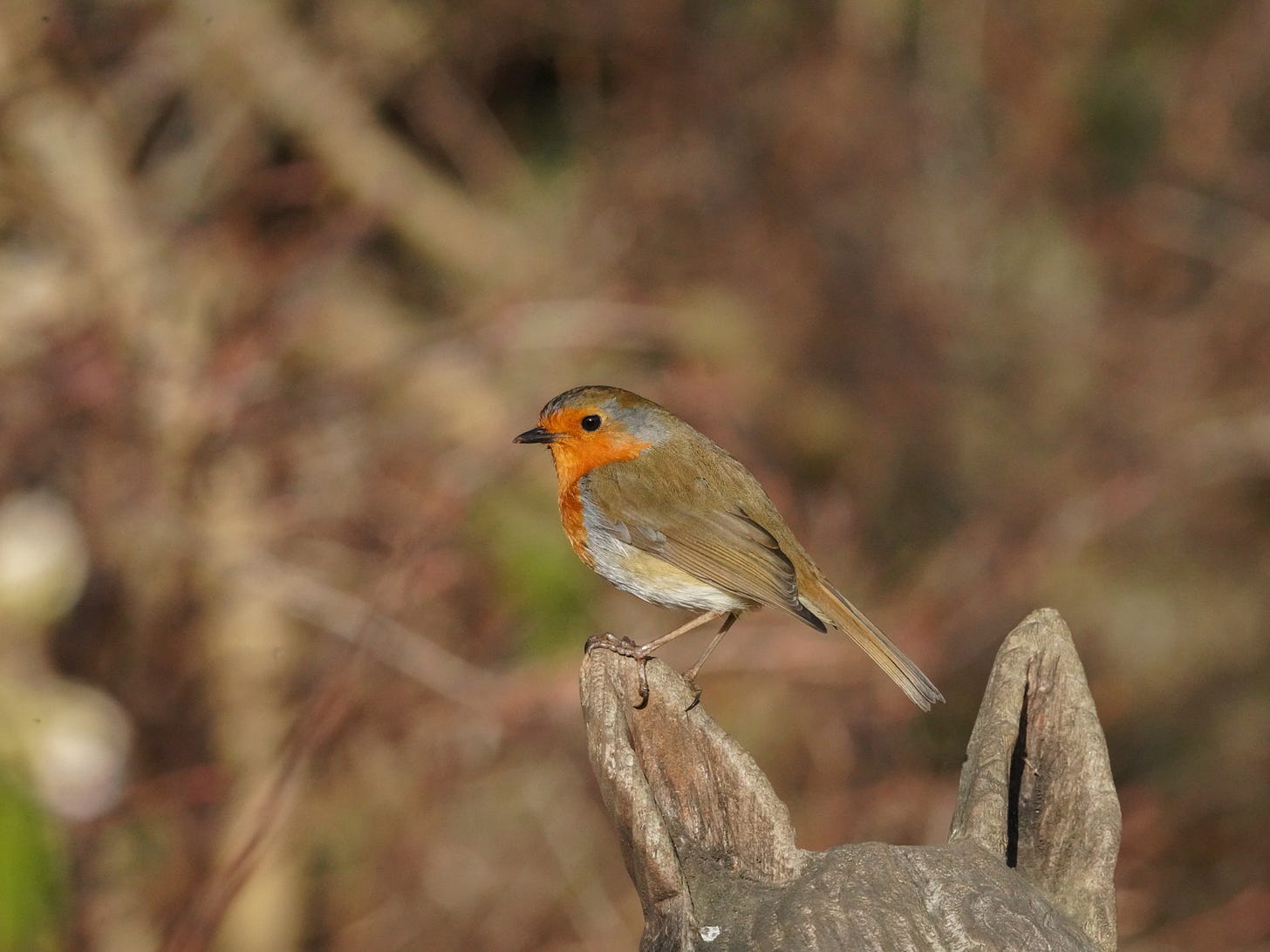

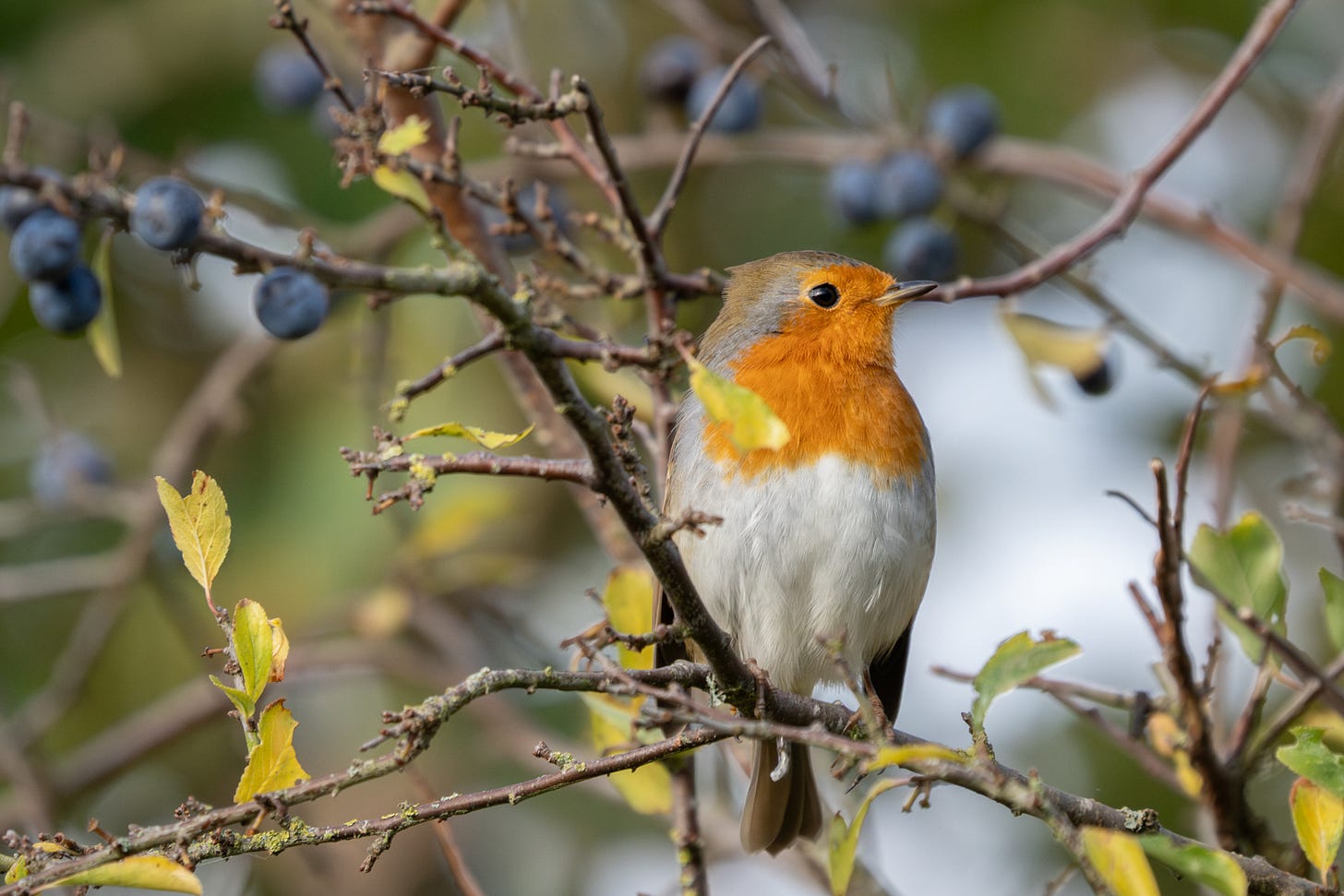
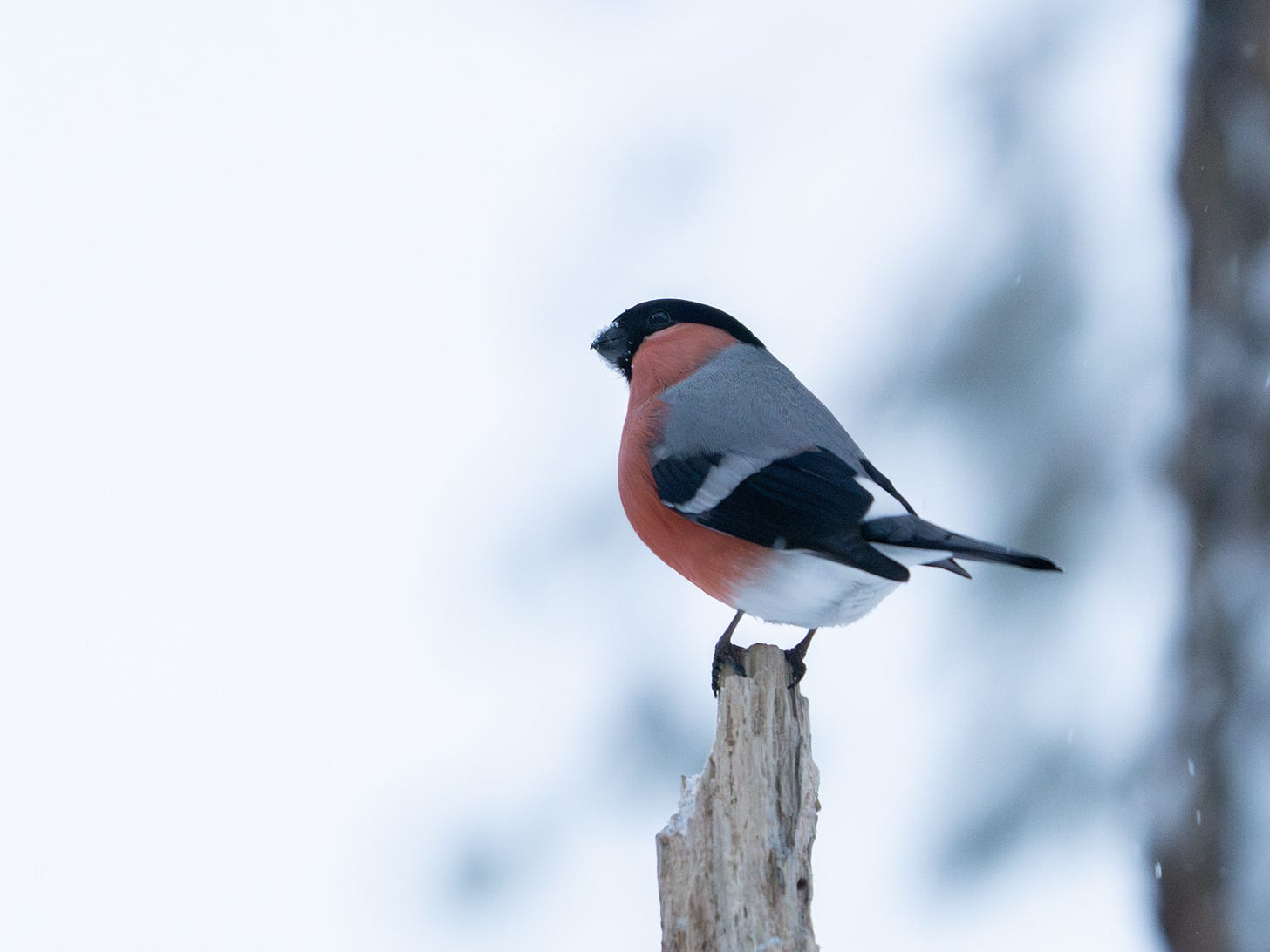
I hear them all the time around my neighboorhood, and am also fortunate enough to see them regularly. Unlike the wrens that I also hear regularly but almost never see.
I have a pair that follow me around the allotment as I dig it over, cheeky and fearless in their picking at grubs. Lovely post — thank you!